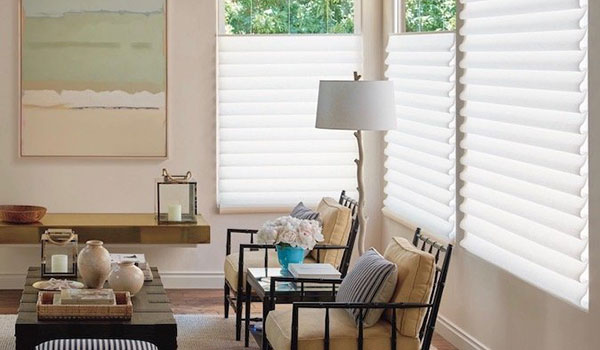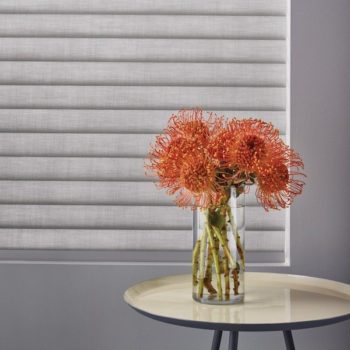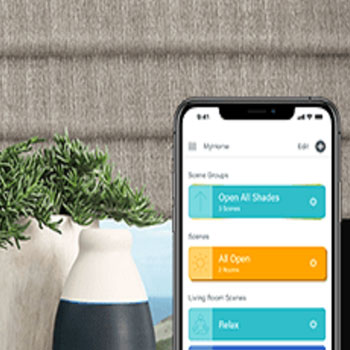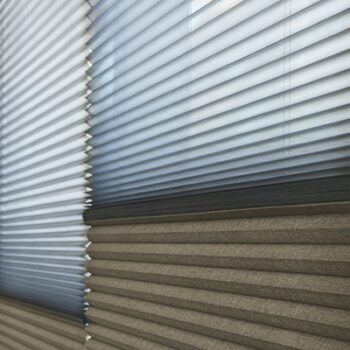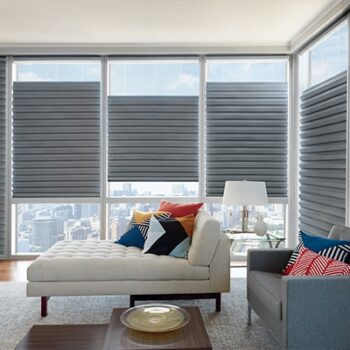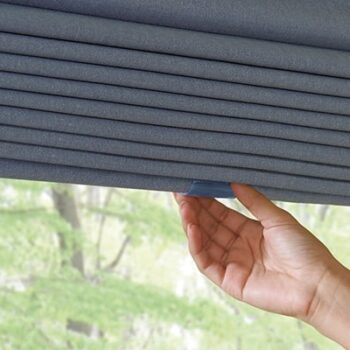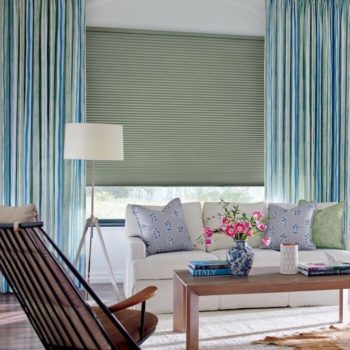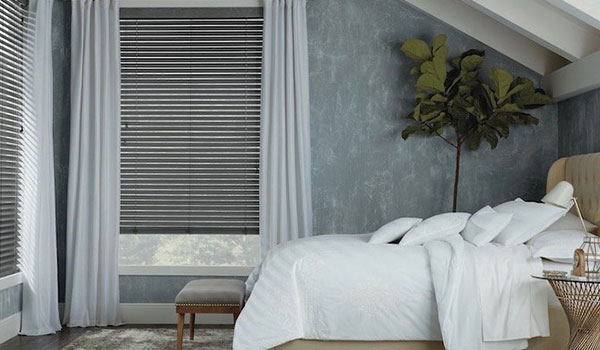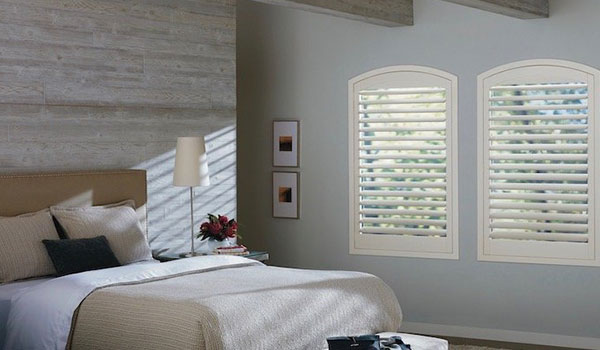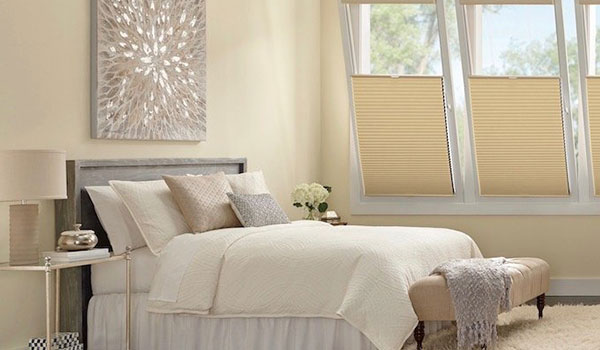Interior Design Stories
Browse all current and past decorating ideas from Beautiful Windows Blinds.
Decorating with Fresh Flowers
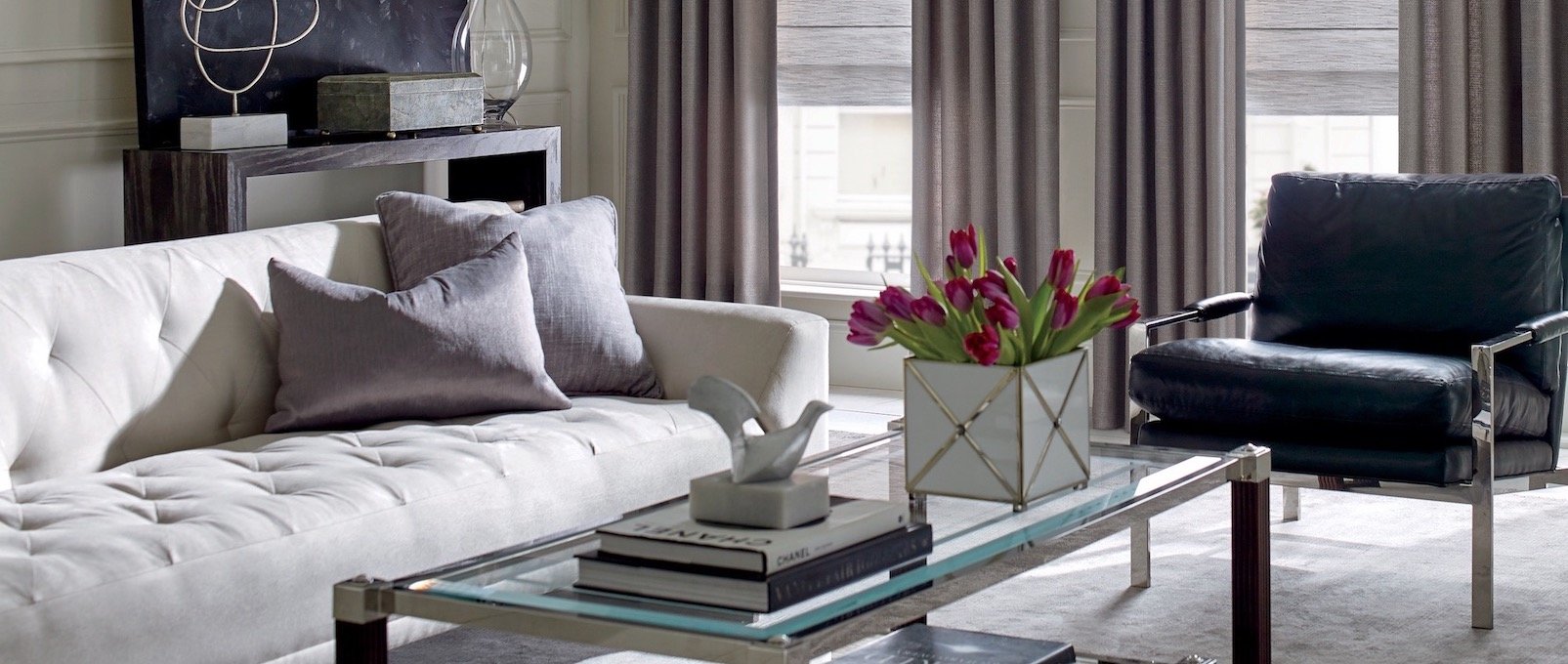
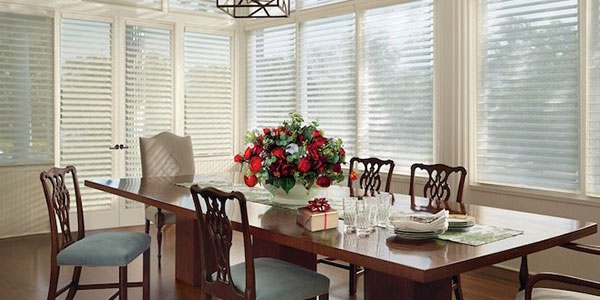
BRIGHTEN UP THE COLDER MONTHS WITH FLOWERS
It may not be spring, but that doesn’t mean you should stop decorating with flowers. After all, they have a magical way of brightening up the colder months. And with the right varieties and a touch of creativity, you can enjoy gorgeous arrangements all year round.
So what types of flowers work best this time of year?
RED ROSES
If you have a lot of white or cream in your room, red roses are a great way to give your space a splash of color. To create some visual interest, try combining them with eucalyptus pods or pine needles.
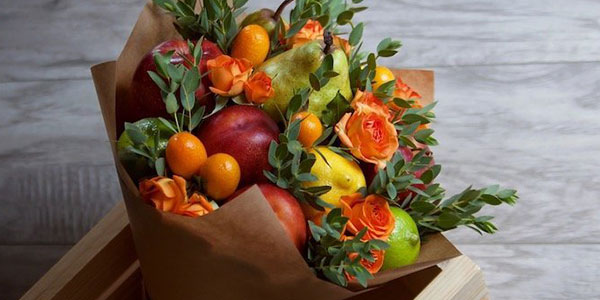
LIMES AND KUMQUATS
Incorporating limes or kumquats into a flower arrangement adds a colorful accent, beautiful aroma and tropical feel to your home. Make sure to insert the sturdy branches first to protect more delicate flower stems.
TULIPS
The great thing about tulips is that they can survive colder temperatures — even those that drop to minus 40 degrees Fahrenheit. For a warm, seasonal look, frame your tulip arrangement with berries.
AMARYLLISES AND PRIMROSES
Colorful houseplants like amaryllises and primroses will brighten up your space well into the winter months. Arrange them along a side table, and add a few evergreen branches for the finishing touch.
POINSETTIAS
While you may typically buy poinsettias for the holidays, they can actually last a whole lot longer. And even when the flowers fall off, you can still enjoy plenty of greenery. Just be careful — poinsettias are poisonous to pets.
Think outside the vase. If you want a really extraordinary arrangement, old watering pots, tin cans and glass bottles offer a truly unique look.
Decorating with Rumba Orange
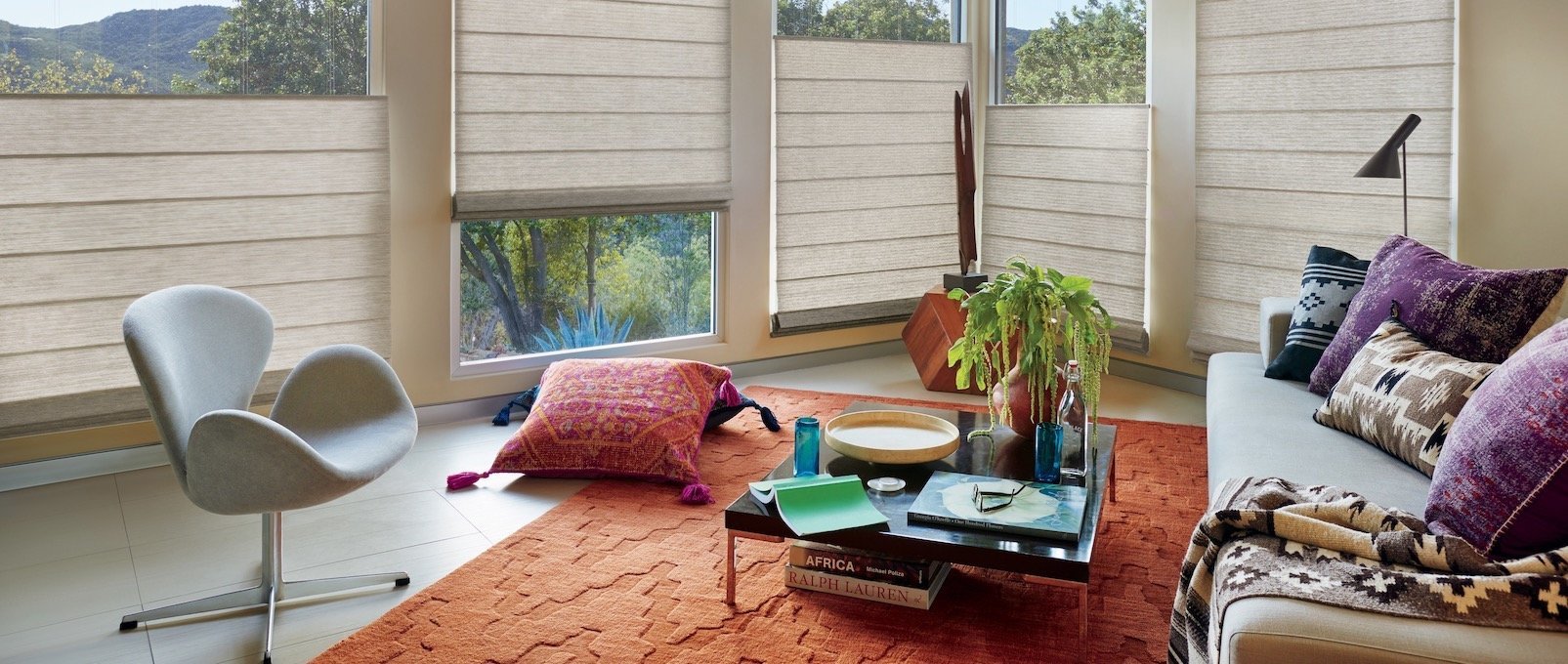
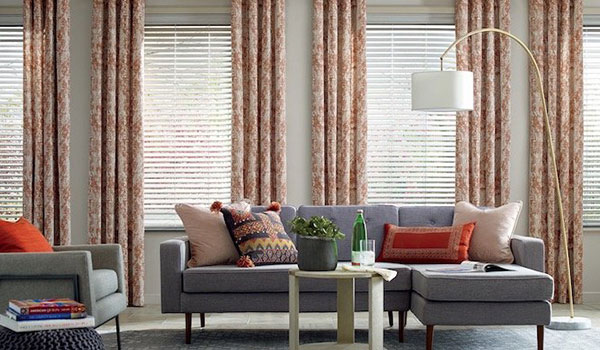
MAKE YOUR ROOM POP WITH THIS TRENDING COLOR
Like the name suggests, Rumba Orange exudes the energy and passion associated with the rhythmic Cuban dance. And in 2020, you’ll be seeing a lot of it. Paint company Behr just included Rumba Orange in its 2020 Color Trends ‘Worldhood’ Palette that features a variety of rich hues and rustic tones for a contemporary, yet warm feel.
When combined with neutrals and earth tones like grays, beiges and taupes, Rumba Orange can really spice up your décor. But you don’t have to go full on orange. By adding just a few orange accents, you can still make a bold statement.
IDEAS FOR ADDING ORANGE ACCENTS
Here are a few ways you can introduce orange to your space:
– Accent your room with an orange area rug, end tables or wall art.
– Mix and match throw pillows and blankets. Try combining solid oranges with multi-colored designs.
– Decorate with orange lamps, candles or other lighting fixtures.
– Add an orange ottoman or bench to your space.
– Install orange curtains or window shades.
– Paint just one wall orange (or use orange wallpaper) to create a focal point in the room. Then use other elements in your space to complement it.
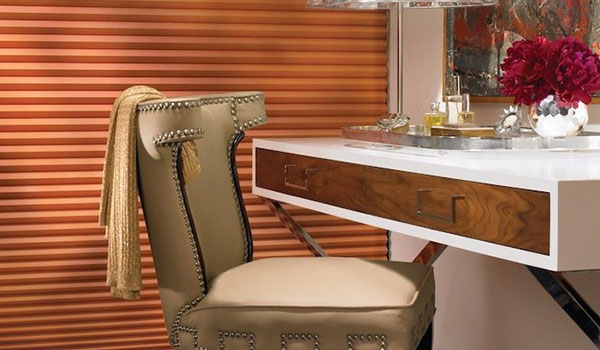
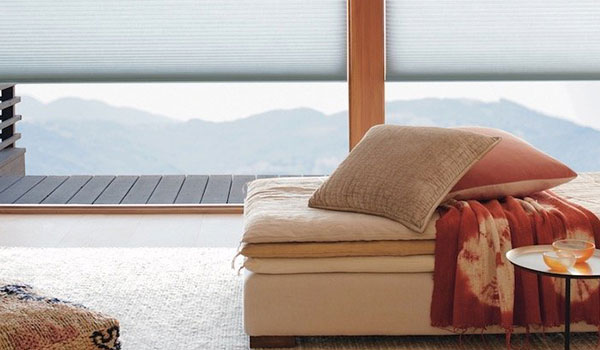
RUMBA ORANGE IS THE NEW BLACK
The key to decorating with Rumba orange is that a little goes a long way. By starting with just one or two strong elements, you can accent them with a variety of accessories to create the perfect balance in color and design.
If you decide to paint, choose a deeply saturated orange because a less saturated color may look dull. Also, if you’re painting an interior space, use an eggshell or matte paint sheen – those sheens have a slight shine and they’re more durable than flat finishes.
Decorating with Throw Pillows
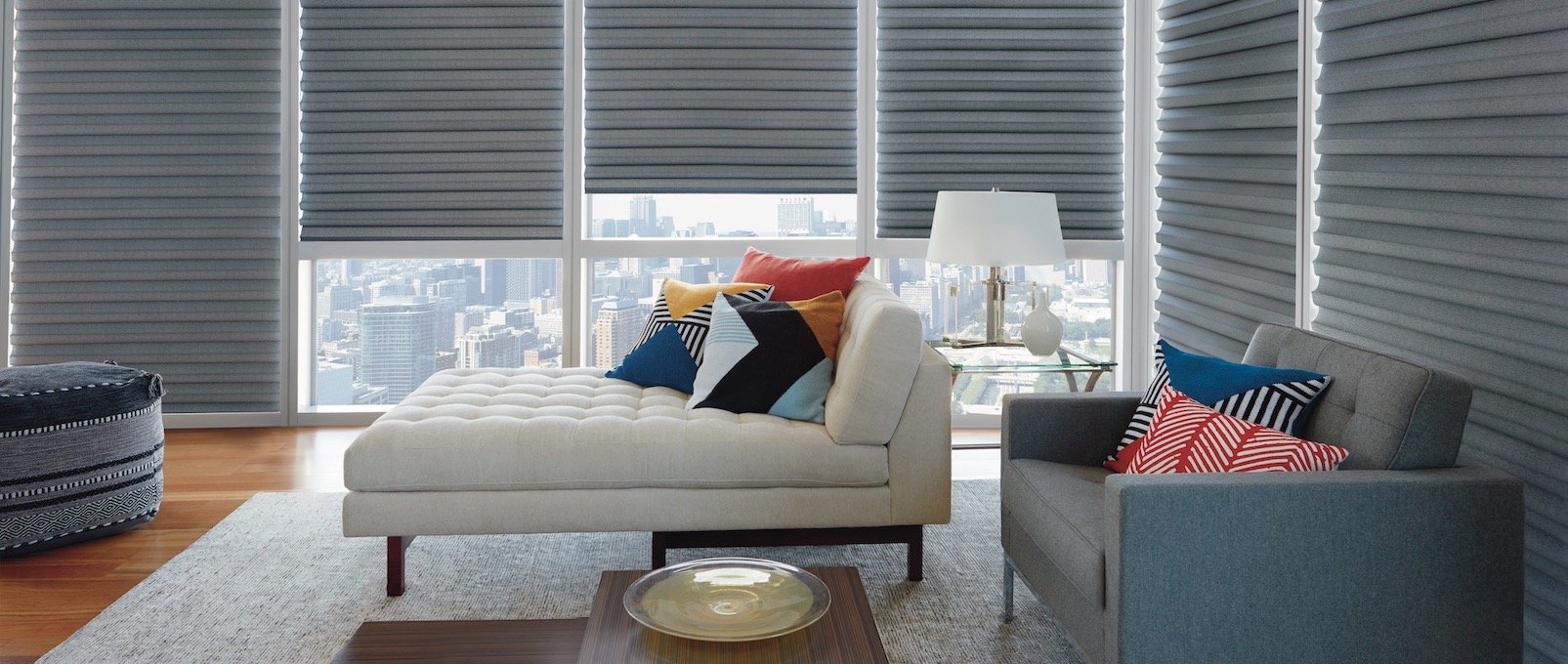
LIVEN UP YOUR SPACE
Throw pillows can give even the most gorgeous furnishings an extra finished look. (Not to mention lounge appeal!)
While many pieces of furniture already come with a matching set of throw pillows, you may still want to consider swapping out a few or all of them to create your own personal statement.
But with so many colors, patterns and sizes to choose from, how do you know where to begin?
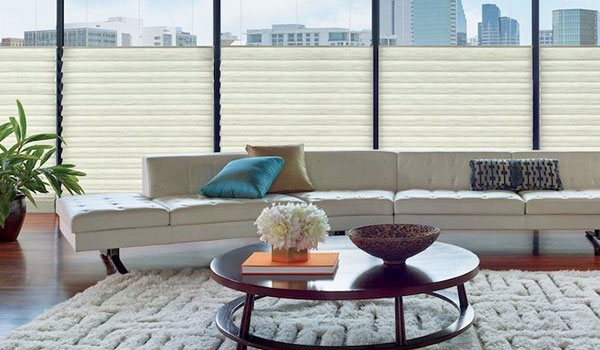
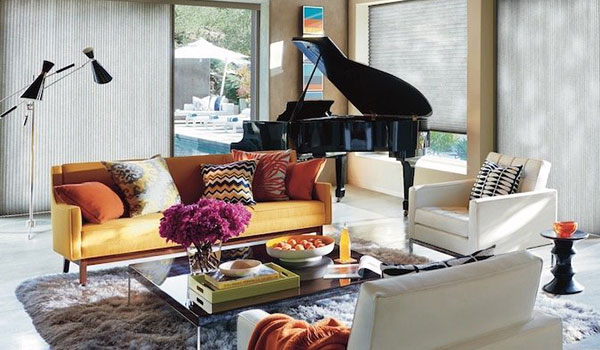
HOW TO CREATE A MODERN LOOK
First of all, keep in mind is that your pillows don’t have to match – you’ll actually pull off a more stylish, modern look if they don’t. But to ensure your pillows coordinate well together, here are a few tips for creating a perfectly mismatched look:
– Choose an odd number of pillows (three to five for a sofa or one for a chair). The asymmetry will make your pillows look like they were naturally tossed there.
– You don’t have to stick to square pillows. A small rectangular one in the center or odd-shaped ones on the outside can add visual interest.
ADD A SPLASH OF COLOR
More tips for selecting throw pillows:
– Mix and match patterns – combine a larger pattern with solid, subtler designs.
– Contrast different textures (for instance, linen or faux fur against a leather couch).
– Pick complementary colors that work well together. Think about colors you can pull from your walls, an area rug or a piece of artwork.
The fun thing about throw pillows is that you can always change them up to give the room a whole new feel. And whatever pillows you go with, the true test of a great look is how much you like it when you enter the room.
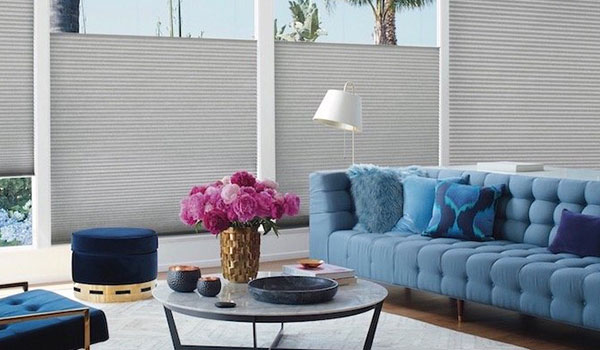
Ideas For Updating Your Guest Room
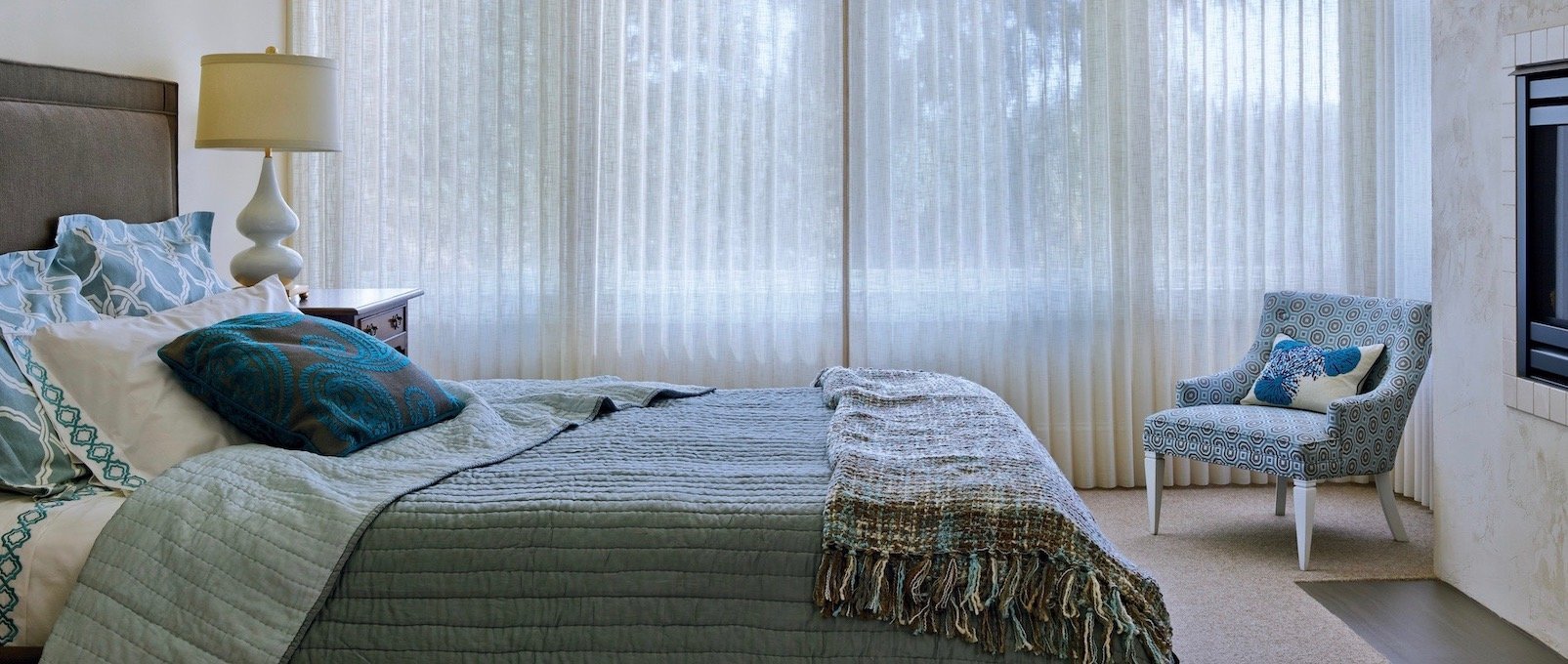
MAKE YOUR GUESTS FEEL AT HOME
Some guest rooms seem like an afterthought, with a mishmash of furniture and linens and a closetful of stuff, while others are carefully planned to help visitors feel pampered and comfortable.
Think your guest room could use some TLC? Don’t worry, it’s easy to make a guest room more inviting, and it doesn’t have to do with the size of the room or the cost of the elements in it. It’s much more about the details you include to add comfort and function.
WHERE TO GET STARTED
First and foremost, clear some of your stuff from the closet, so guests can hang their clothes and store their shoes out of sight. Also clean out at least a couple of drawers from a dresser for visitors to stow their socks and t-shirts.
Think about where people can put their suitcases or sit to put on shoes and socks. A bench at the foot of the bed is perfect.
If there’s enough space in your guest room, set up a sitting area with a cozy chair or two, good lighting, and a small table.
HOW TO ADD COMFORT AND FUNCTION
Other elements to consider are:
– A high-quality mattress and good bed linens
– Pillows with various stuffing materials and a couple of firmness levels
– Several blankets or throws, so guests can adjust to their own heat level
– A ceiling fan and/or space heater as needed
– Window fashions that provide privacy and block out the morning light
– Side tables or nightstands on both sides of the bed, with good lighting for reading
Upgrade your guest room this season, and you'll be ready to host your holiday visitors in style.
Decorating with Earth Tones
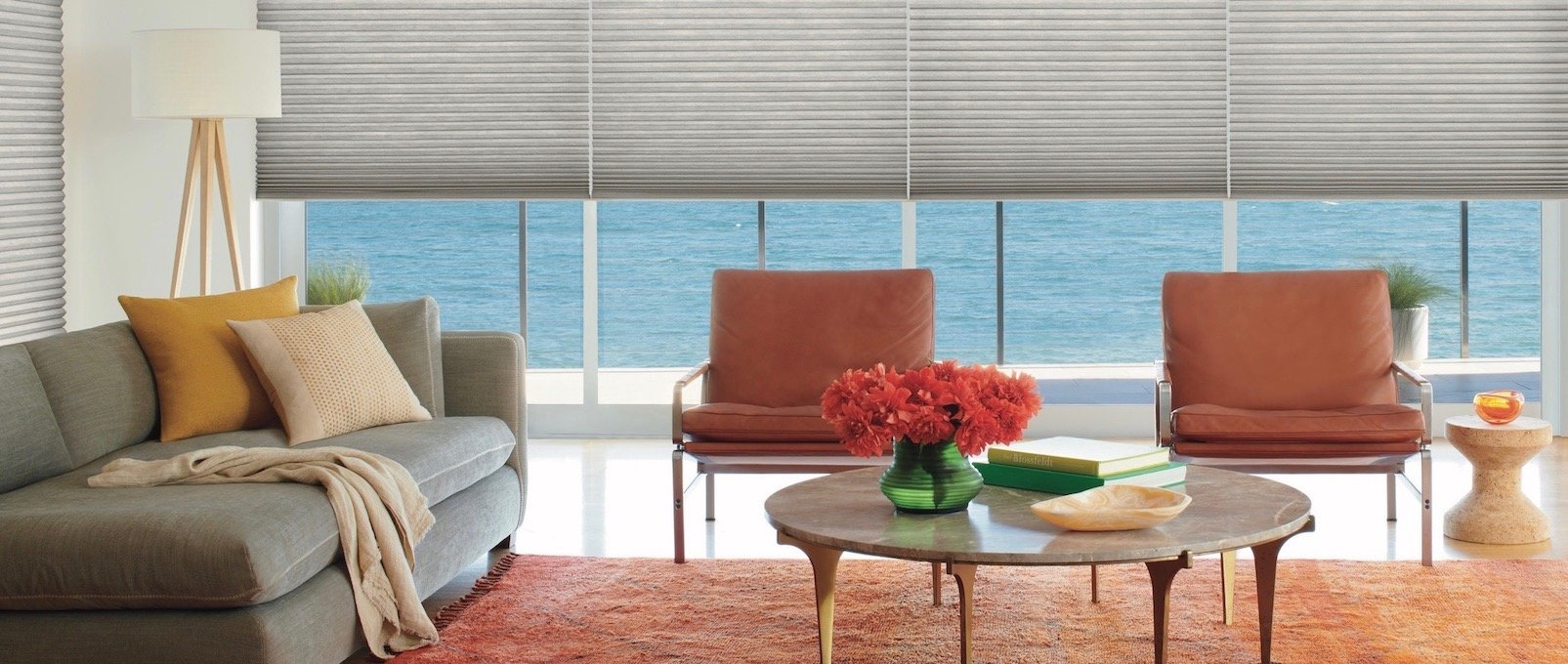
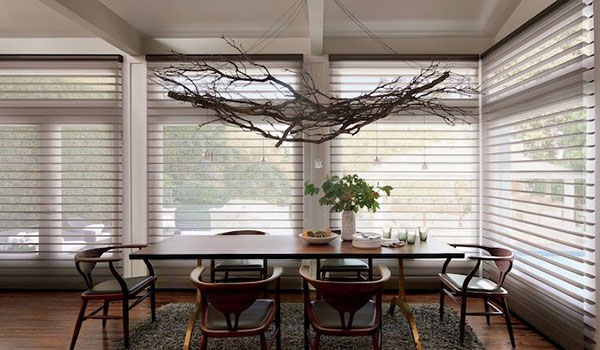
An earth tone palette can go with almost any decorating style.
A WARM AND NATURAL LOOK
Earth tones are comfortable, rich looking and warm, adding harmony and coziness to a home environment. They remind us of the colors of the falling leaves in the harvest season.
An earth tone palette can go with almost any decorating style – smooth and sophisticated, rough and rustic, or dainty and feminine. It all depends on the specific hues you select and the style of the home elements you purchase. Using lighter versions of earth tones will create a more lustrous, natural look.
WHAT’S YOUR FAVORITE HUE?
Consider the variety of earth tones that work well for home design projects: ginger, copper, cinnamon, tan, umber, khaki, pumpkin, coffee, persimmon, sage, and terra cotta.
Earth tone hues tend to work well with each other, so it’s easier to combine colors than with some other palettes.
Earth tones also go well with cream, taupe, beige and light gray as a neutral. Use white to brighten an earth tone palette or introduce black to add drama and sophistication.
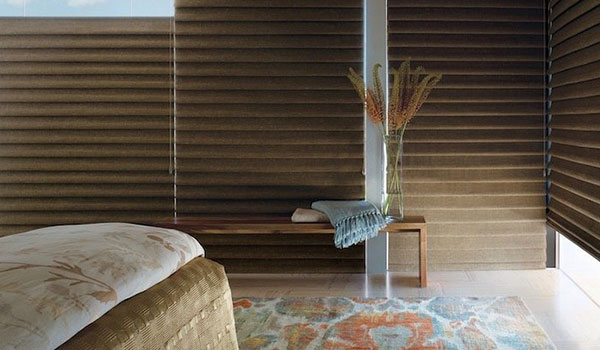
Earth tones tend to work well together.
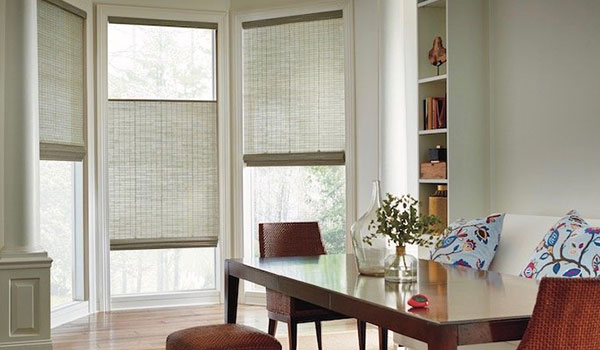
Earth tone hues help blend the indoors and outdoors.
WHERE TO USE EARTH TONES
Earth tones are perfect for a variety of interior elements, including:
– Upholstery fabric
– Window treatments
– Pillows and bedding
– Rugs and flooring
– Paint
– Countertops
If you have large windows or a beautiful outdoor setting, earth tone hues will help blend the indoors and outdoors, since they mimic the colors of the natural world.
Take the chill out of your home environment this fall. Add earth tones for a natural and balanced look.
Diagonal Lines in Home Design
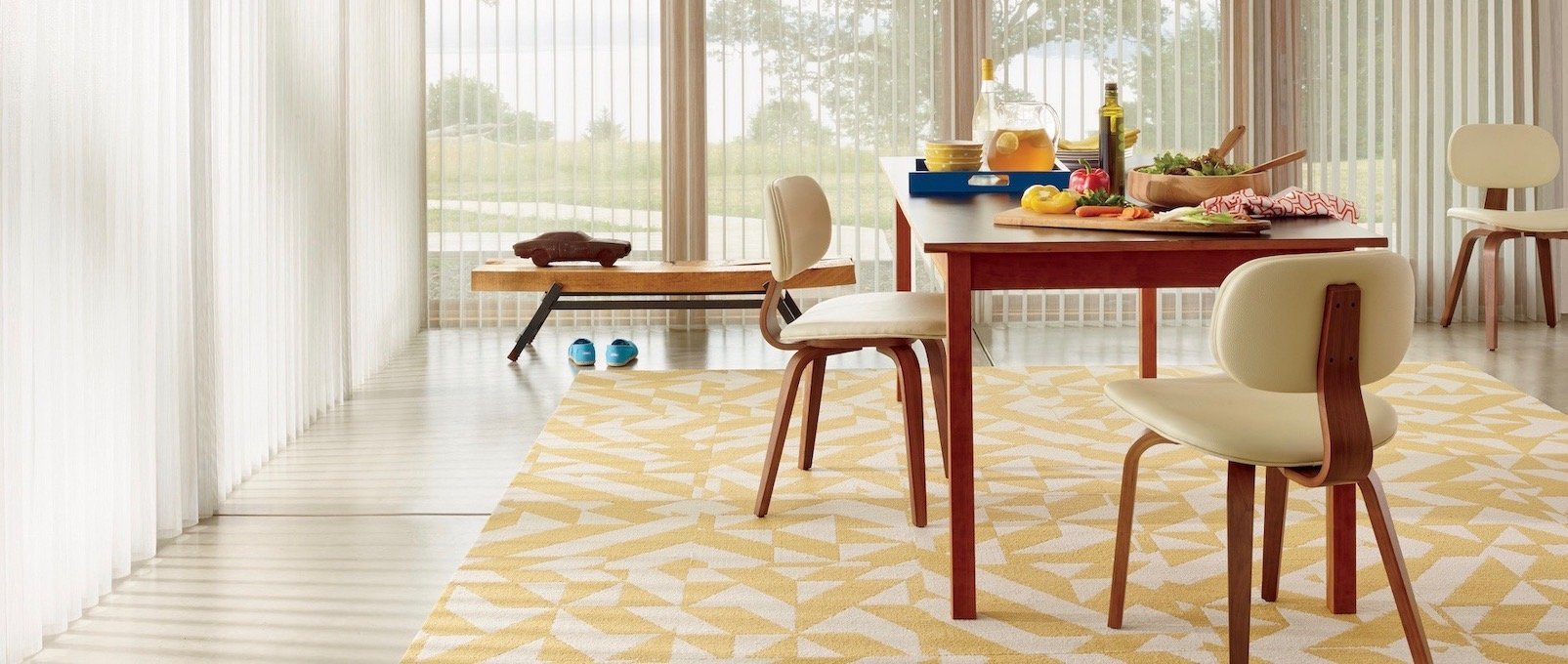
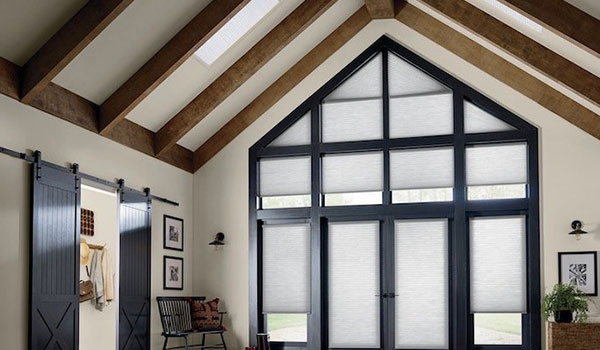
Diagonal lines add interest and energy.
PUT A NEW SLANT ON YOUR DÉCOR
Most structural components of a house are organized on a horizontal and vertical grid, including floors, walls, ceilings, windows and doors. In addition, most furniture and home design elements are square or horizontal. Why not think creatively and introduce an item or two on the diagonal?
In the architecture of your home, diagonals can be planned in:
– Angled top windows
– Angled mullions in windows
– The design of beams in the ceiling
– Angled walls, creating a non-rectangular room
DIAGONAL LINES IN PATTERNS
For interior design planning, the most obvious diagonal options are patterns in carpeting, rugs, flooring, tile, upholstery, and window treatments, such as a zigzag pattern.
Some elements that, at first, seem to be horizontal or vertical can be used on a bias to create a diagonal look, e.g., you can lay wood flooring planks on a bias.
Also consider plaid or checked fabrics and wall coverings, or hanging mirrors on the diagonal instead of straight up and down.
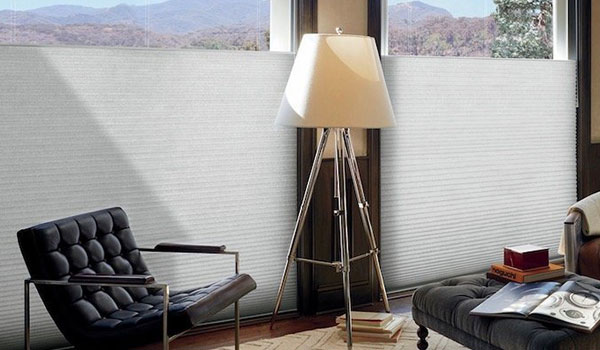
Rugs and lamps provide an easy way to add diagonal lines.
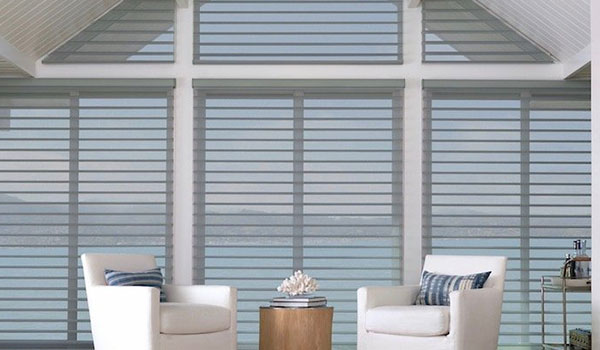
Consider placing your chairs on an angle
IDEAS FOR YOUR FURNITURE
More ideas for thinking outside the box are:
– Add tables and chairs with slanted legs
– Select lamps that have an angled lamp shape or a tripod stand
– Place your sofa diagonally to a wall, instead of parallel or perpendicular
– Add two club chairs diagonal in relation to each other, instead of squared off, with an occasional table in between
– Build an angled kitchen island
Turn your home design on the bias. It will add a burst of energy to your home décor.
Decorating with Stone
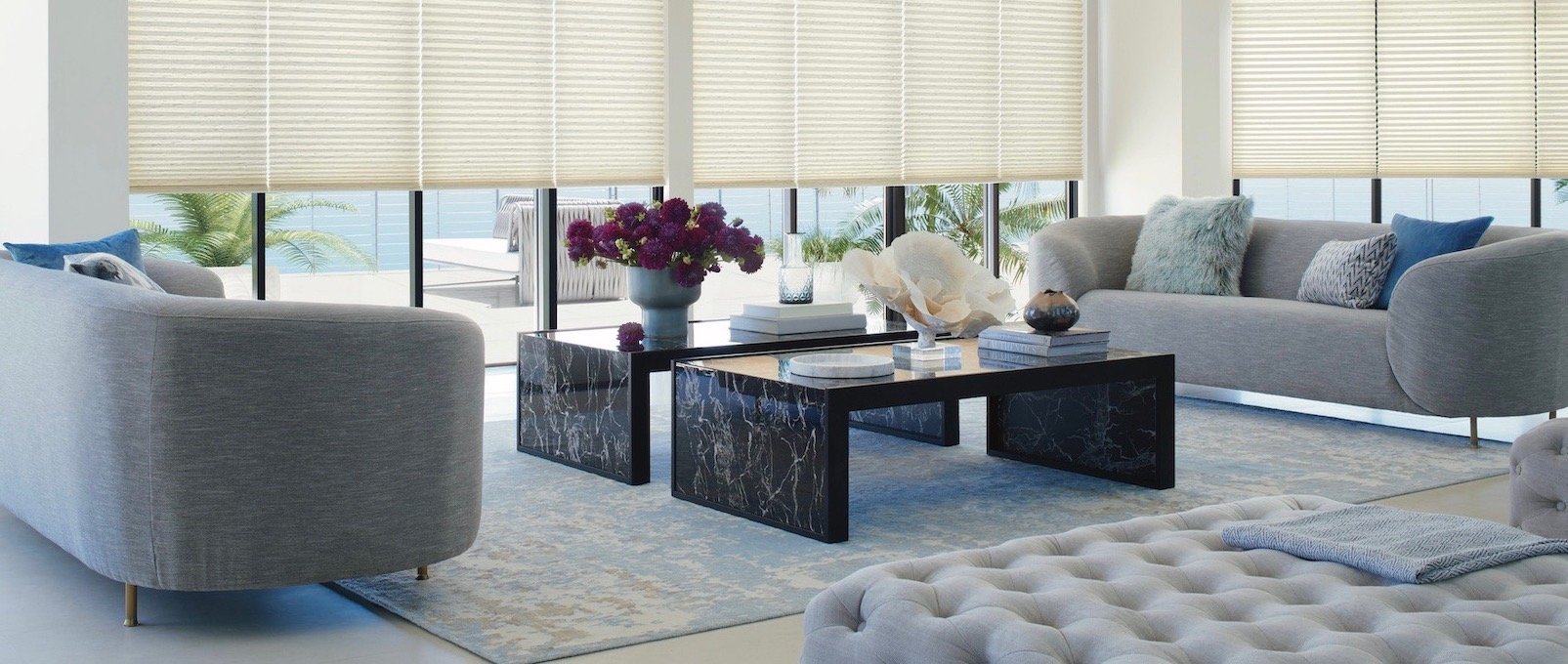
AN AGE-OLD MATERIAL
From the earliest history of mankind, homes have been built using stone for walls and floors. Stone adds texture, quality, weight and long-term value to the look of a home.
Stone choices are almost unlimited, and each comes in oh-so-many colors, textures and natural patterns. Choices include marble, granite, onyx, travertine, slate, sandstone, and limestone.
Most types of stone can be finished to be smooth and polished, rough and unpolished, or even fire-finished for a rustic look.
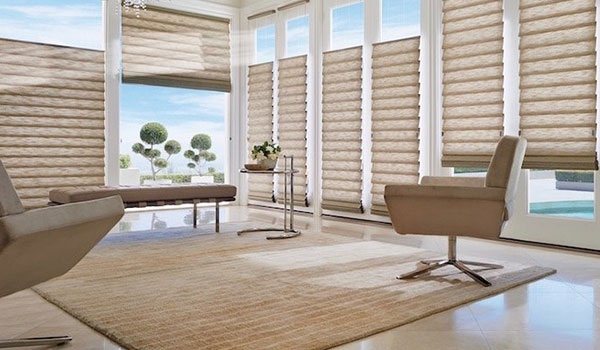
Stone flooring adds quality, weight, and value to your home.
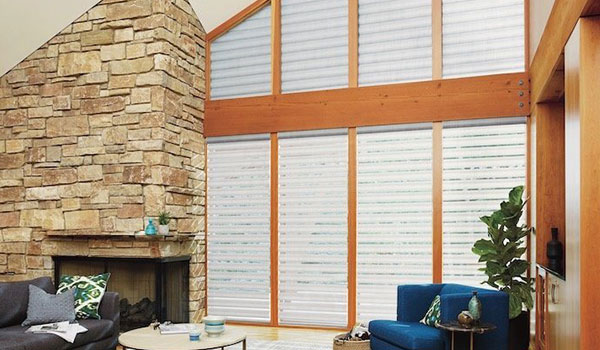
A bold stone fireplace surround becomes the focal point of the room.
WHERE TO ADD STONE
Because stone carries weight and is bold, it often becomes the focal point of a room, adding drama, substance and interest.
So many surfaces lend themselves to stone including:
– Fireplaces, surrounds and mantles
– Walls and floors
– Coffee tables and dining tables
– Counter tops and backsplashes
– Showers and tub surrounds
– Sinks
WORK WITH AN EXPERT
It’s important to work with an expert to select the stone that looks perfect in your house and that works for the functions you need. Some types of stone are more durable than others or can be treated for heavy use.
Often, depending where you live, you can even go to a stone yard to select the stone to be used in your rooms.
Consider adding stone to your home – it can give your house a sense of nature and permanence.
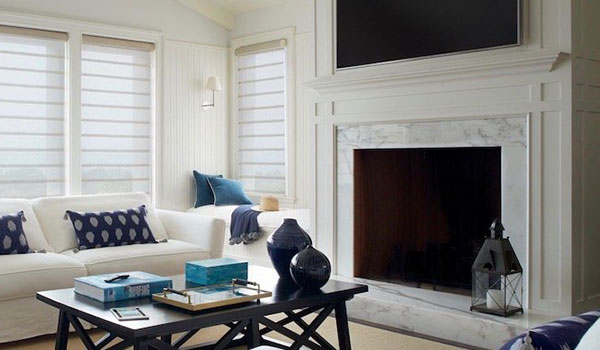
A marble fireplace surround adds a polished look.
Adding a Kitchen Island
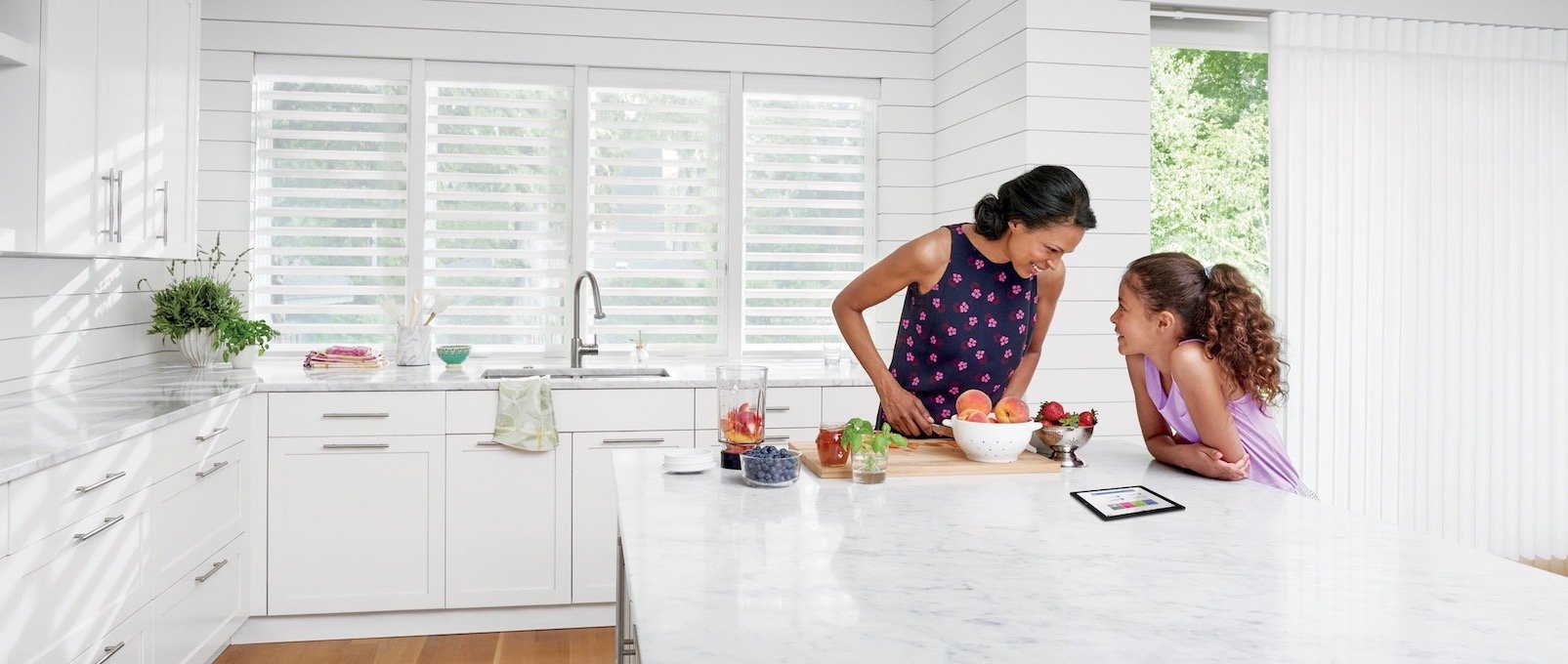
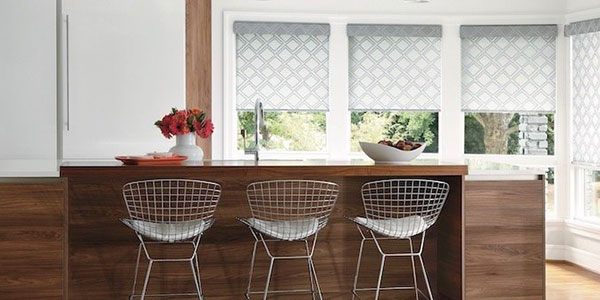
ENHANCE YOUR KITCHEN
We all know that the kitchen becomes the center of almost any fun gathering of family and friends and an island is at the center of that social experience!
An island (or peninsula) should add functionality and efficiency to your kitchen. At the same time, its look and size provides an anchor to your kitchen and often a dividing line between the kitchen itself and the living space around it.
CONSIDER ALL PURPOSES
When you plan your island, consider all purposes you want or need, including:
– A second sink, stovetop or oven
– A wine refrigerator
– Extra counter space
– Extra storage, which can be closed cabinets, open storage or both
– Extra seating for casual meals, kids’ homework or guests to hang out while you cook
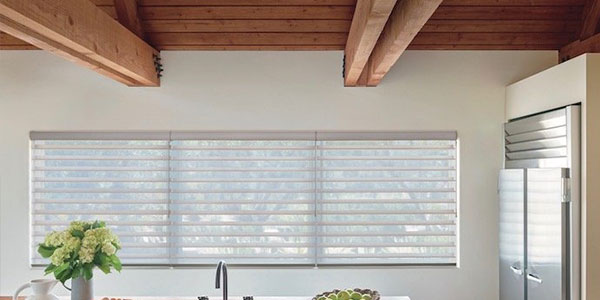
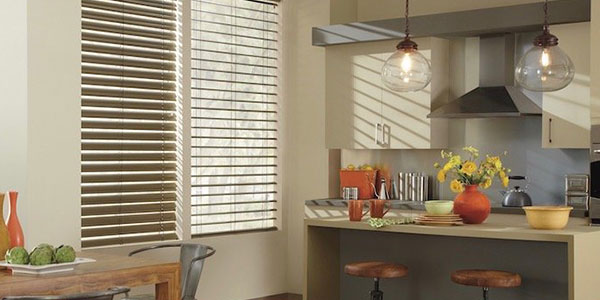
ISLAND DESIGN IDEAS
Think of these choices when designing your kitchen island:
– Use the same cabinet color and countertops as the rest of the kitchen or a contrasting color and style
– Add interesting bar stools and beautiful pendant lighting
– Create a shape that complements your floor plan and allows enough space to move around (and open dishwasher and oven doors completely)
– Add open shelving above your island to display your cookbooks or your most beautiful glasses and dishes
– Hang your pots and pans above the island
Add function to your kitchen with an island. It will become the focal point of your kitchen, and maybe even your home.
Decorating with Cream Colored Accents
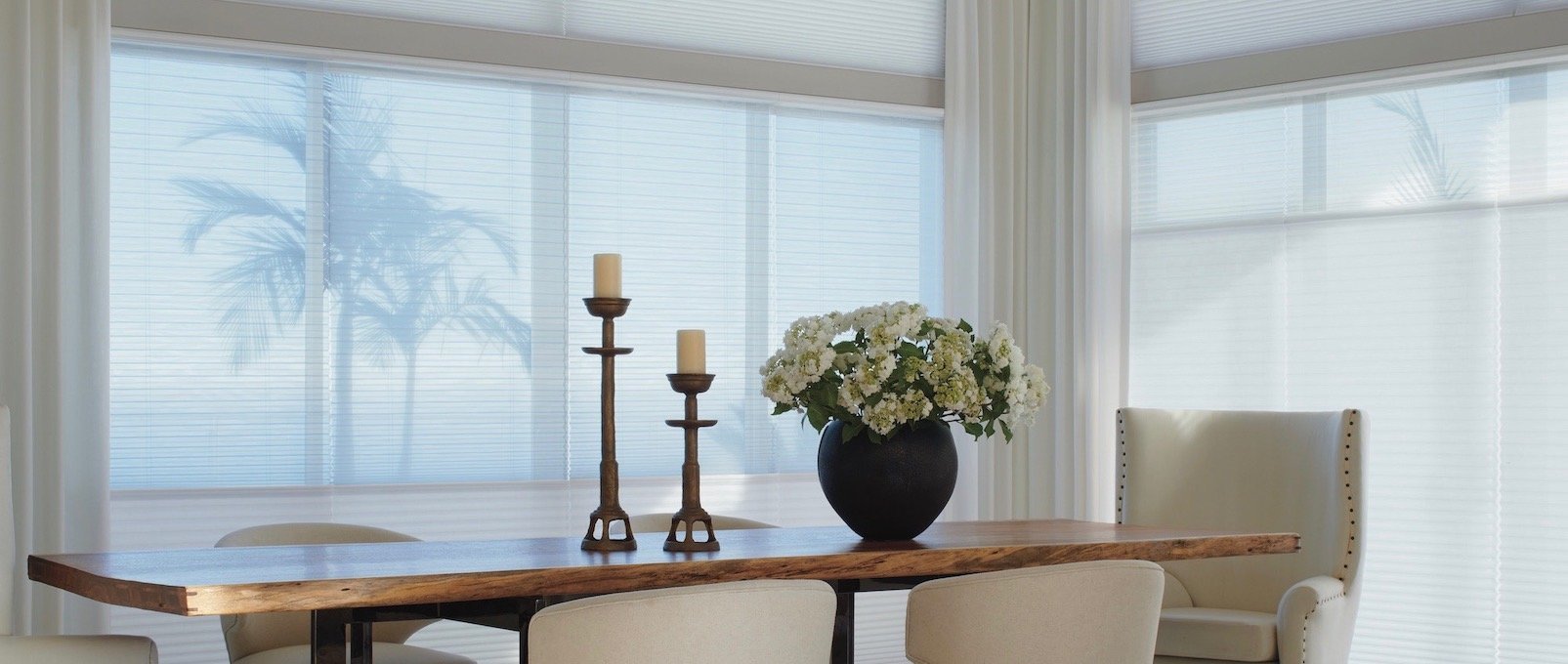
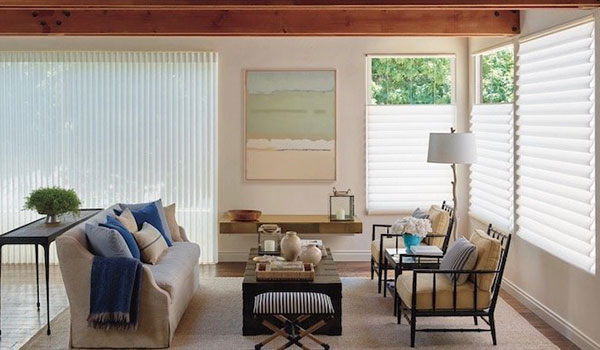
THE COLOR CREAM
Call this color what you like – buttercream, whipped honey, straw, pearl, or linen – it’s a flexible shade for home decorating that’s bright and sunny, creating warmth in a room.
Like other neutrals, buttercream lets accent colors shine and makes your artwork pop. But it’s warmer and more inviting than pure white or barely off-white. Buttercream has many subtle versions. True buttercream has a yellow undertone; other versions have touches of pink, grey or peach.
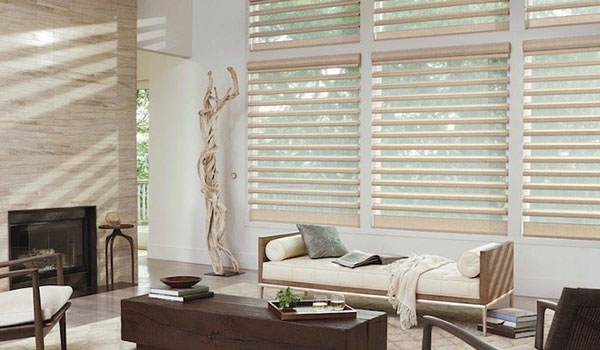
A FLEXIBLE, RELAXING NEUTRAL
This versatile neutral goes with both warm and cool colors, pastels and bold tones. It also pairs perfectly with black, white, gray and various tones of brown, especially dark wood furniture, flooring and cabinets.
Buttercream is a soft shade that makes you feel relaxed and serene, and it won’t go out of style. It shines in most any room of the house and can go casual or formal, traditional or contemporary. In a bedroom, home office or library, you can even go with a slightly deeper shade of cream to create a cozy feel.
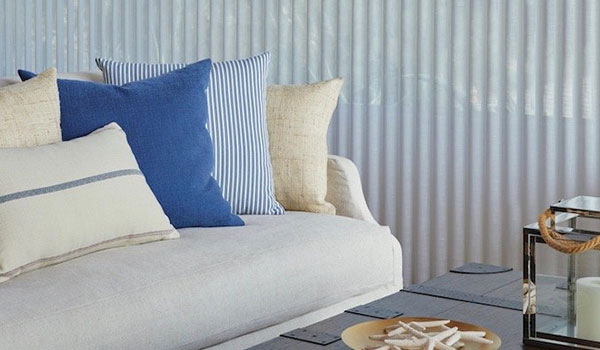
WHERE TO USE BUTTERCREAM
Consider the color cream for:
– Paint
– Carpeting and rugs
– Stone surfaces
– Upholstery fabrics and pillows
– Window fashions
– Cabinets and counter tops
– Bedding
– Table and bath linens
Add buttercream this season to your decorating plans. It's a delicious color for heightening your home décor.
Decorating with Bookshelves
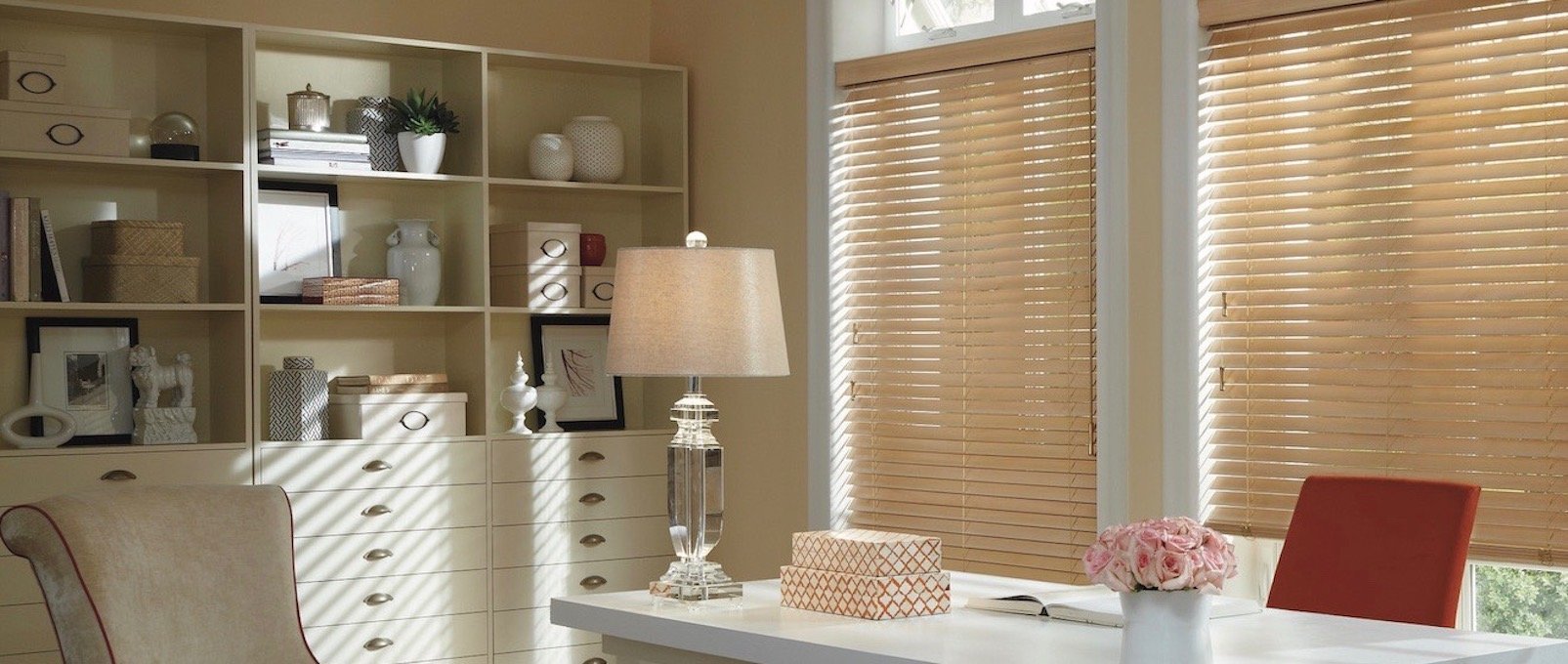
EXHIBIT YOUR TREASURES AND REDUCE CLUTTER
A beautiful set of bookshelves is about so much more than just books! Bookshelves are a design element that is both functional and decorative. They solve some of your storage issues and, at the same time, help you display decorative items, such as statuary, vases,
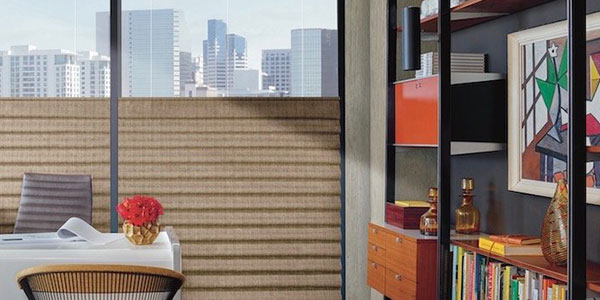
Bookshelves add beauty and function.
flower arrangements, clocks, plants, photos and yes, even books!
Bookshelves are not just for a home office or library; they can be functional and add interest to almost any room of the house, from foyer to kitchen to bedroom and more.
HOW TO FIND THE PERFECT BOOKSHELVES
Shelves come in almost any style, material, shape and color; some are closed in and others are open style. Bookshelves can be built in, customized to your space, or purchased as-is and set in place.
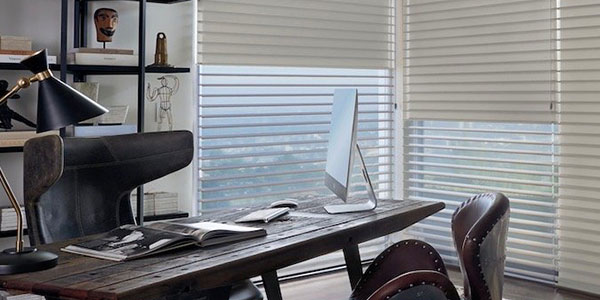
Industrial bookshelves add a bit of grit to your room.
– A vintage bookshelf can add history to your décor.
– Industrial bookshelves add grit and an avant-garde feel.
– A French boulangerie creates a European feel.
– Totally modern neutral bookshelves blend into the background of your decorating style.
TIPS FOR ARRANGING YOUR SHELVES
Consider these ideas to optimize the impact of your bookshelves:
– For a new take on arranging books, lay books horizontally or organize your books by color.
– Install bookshelves along a stairway or around windows or a door.
– If your bookshelves have a closed back, paint the back a contrasting color.
– Don’t pack your shelves too tightly; leaving empty space creates a cleaner look.
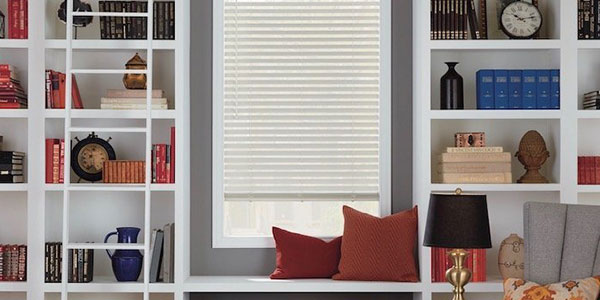
Arrange your books by color for added interest.
– Use a bookshelf as a room divider, either at waist height or full height.
– Don’t forget about bookends; some are interesting and fun.
Add appeal to the display of your prized possessions and clear up the clutter with a beautiful set of bookshelves.
Kids’ Room Decorating Ideas
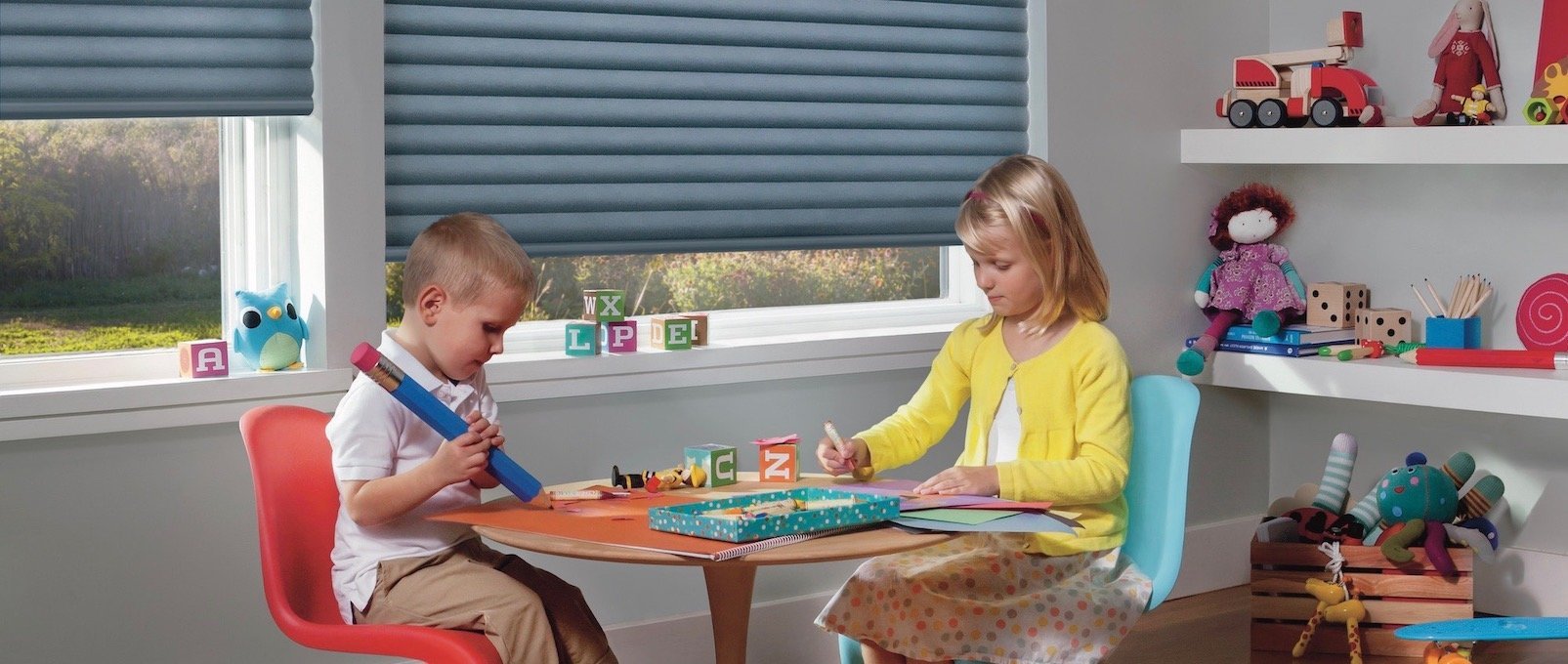
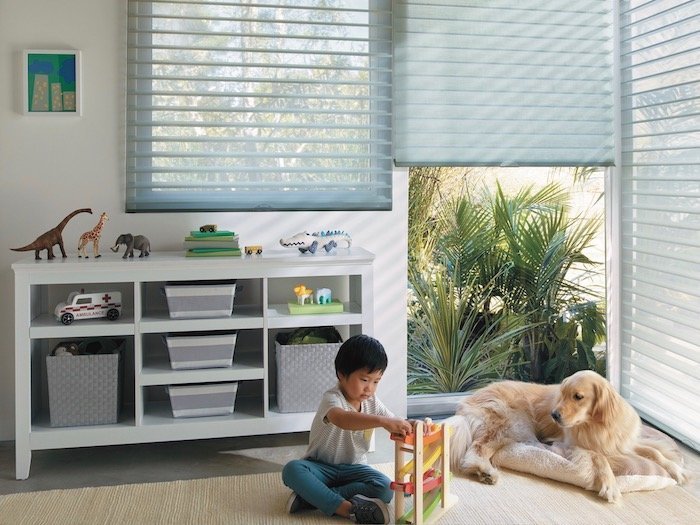
HOW TO DECORATE A CHILD’S BEDROOM
Planning the décor of your child’s bedroom is a very personal experience, both for you and for your child. Every child has different interests, likes and dislikes; yet there are some commonalities in all children’s rooms.
The room should have a comfortable bed, a desk or table with chairs, and storage for clothes, shoes, books, toys, and other items. It’s also nice to have free floor space in the room for playing, and let’s admit it: Many kids prefer to sit on the floor instead of in a chair!
It’s smart to buy sturdy, long-lasting furniture that can transition from early childhood to the teen years. Use smaller and less expensive elements to reflect your child’s current interests and likes.
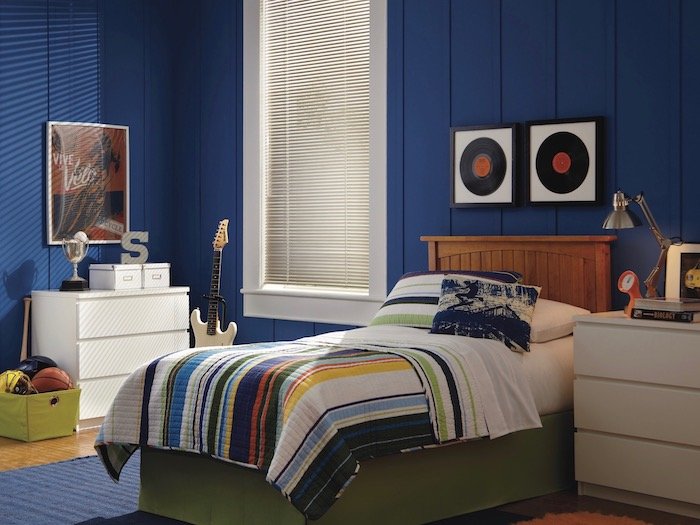
GET YOUR CHILD INVOLVED
Let kids make some decisions, especially about colors they like and the theme of their room. Themes may include a cartoon character, the circus, music, ballerina, horses, dolls, astronauts, cowboys, safari, lodge, a favorite activity or sport, or a local sports team.
Great elements to let kids select include:
– Paint color
– Bed linens
– Pieces of art
– Rugs
Maybe even help them create a unique piece of art for their room!
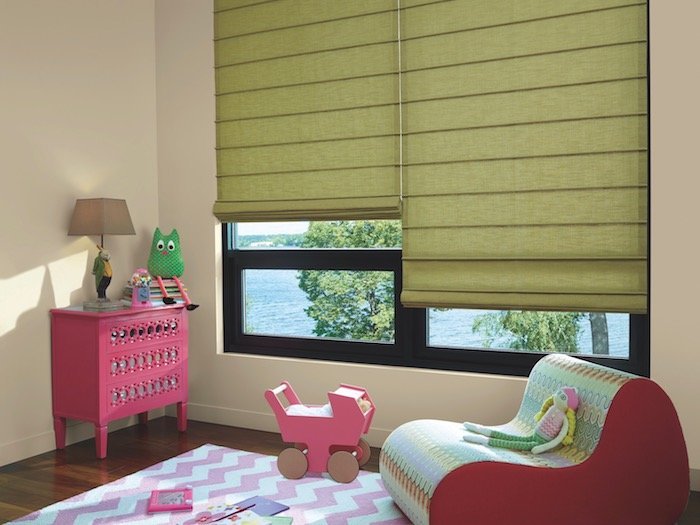
CREATE A FUN AND DURABLE DÉCOR
Additional decorative elements to consider include:
– Stencils or decals on walls or ceilings to carry out a theme
– An unusual lamp or light fixture
– Colorful plastic bins for storage
– Painting one wall with chalkboard paint so they can draw on it and erase whenever they’d like
Furnishings should be easy to clean and maintain and difficult to break. Install lower hanging rods in the closet that can be removed, as they grow taller.
Your children will grow up sooner than you think. Have fun planning a bedroom they love and that will provide long-lasting memories.
Decorating with Lamps
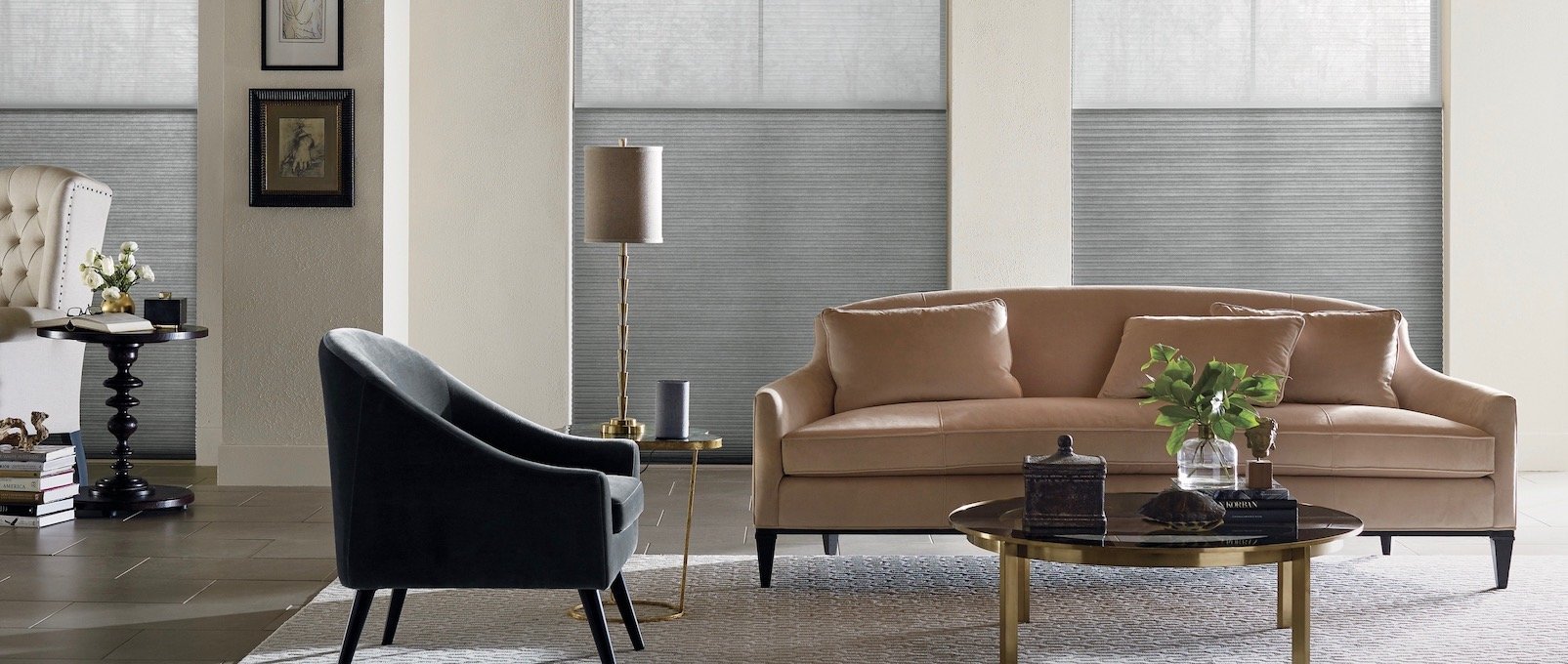
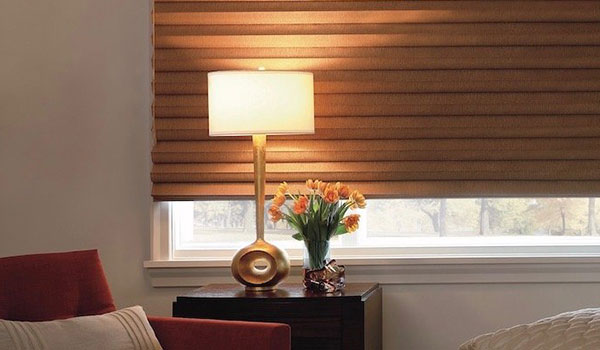
THE IMPORTANCE OF LIGHTING
Too often lamps become an afterthought to a decorating project when we’re exhausted from planning other details. In reality, they’re the perfect finish to a room because they create a feeling of warmth and atmosphere. It’s important to focus on lamps for a beautifully completed room decor.
Function is definitely key to selecting lamps since different types of lamps and light bulbs provide various qualities of light. Work with a pro to help plan your entire lighting scheme, which often includes recessed lighting, hanging lights, lamps and more.
The style, color, shape and materials of a lamp should complement the style of your décor. Lamps may add a distinctive touch that stands out and becomes a focal point, or they can fit into the background. The choice is yours. A lamp can be traditional or modern, masculine or feminine, and embellished or clean in look.
LAMPS ADD BEAUTY AND FUNCTION
Think of all the places you can add a beautiful lamp:
– A dining room buffet
– A foyer console table
– A bedroom nightstand or dresser
– An end table or side table in the living room or great room
– The vanity in a powder room
– The desk in a home office
Of course, not all lamps perch on a table-like surface in your home. Floor lamps add a beautiful mix, sitting next to almost any piece of furniture in almost any room. Just remember not to put your floor lamp too close to passageways.
Focus on updating your lamps this season to create a brilliant fashion statement and additional lighting.
